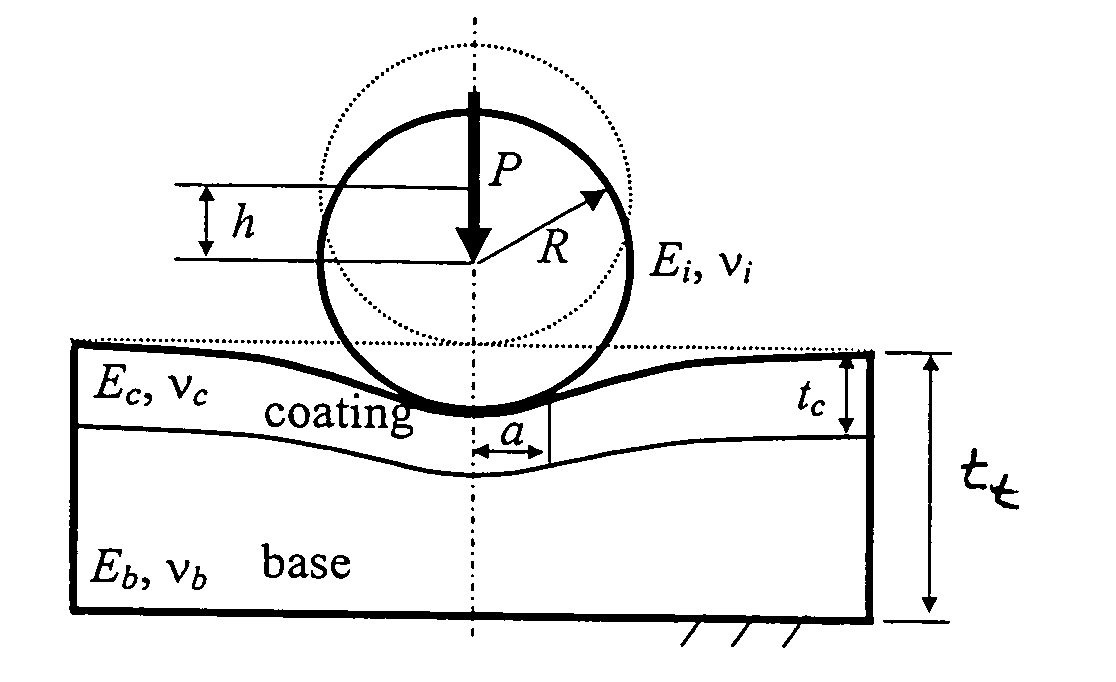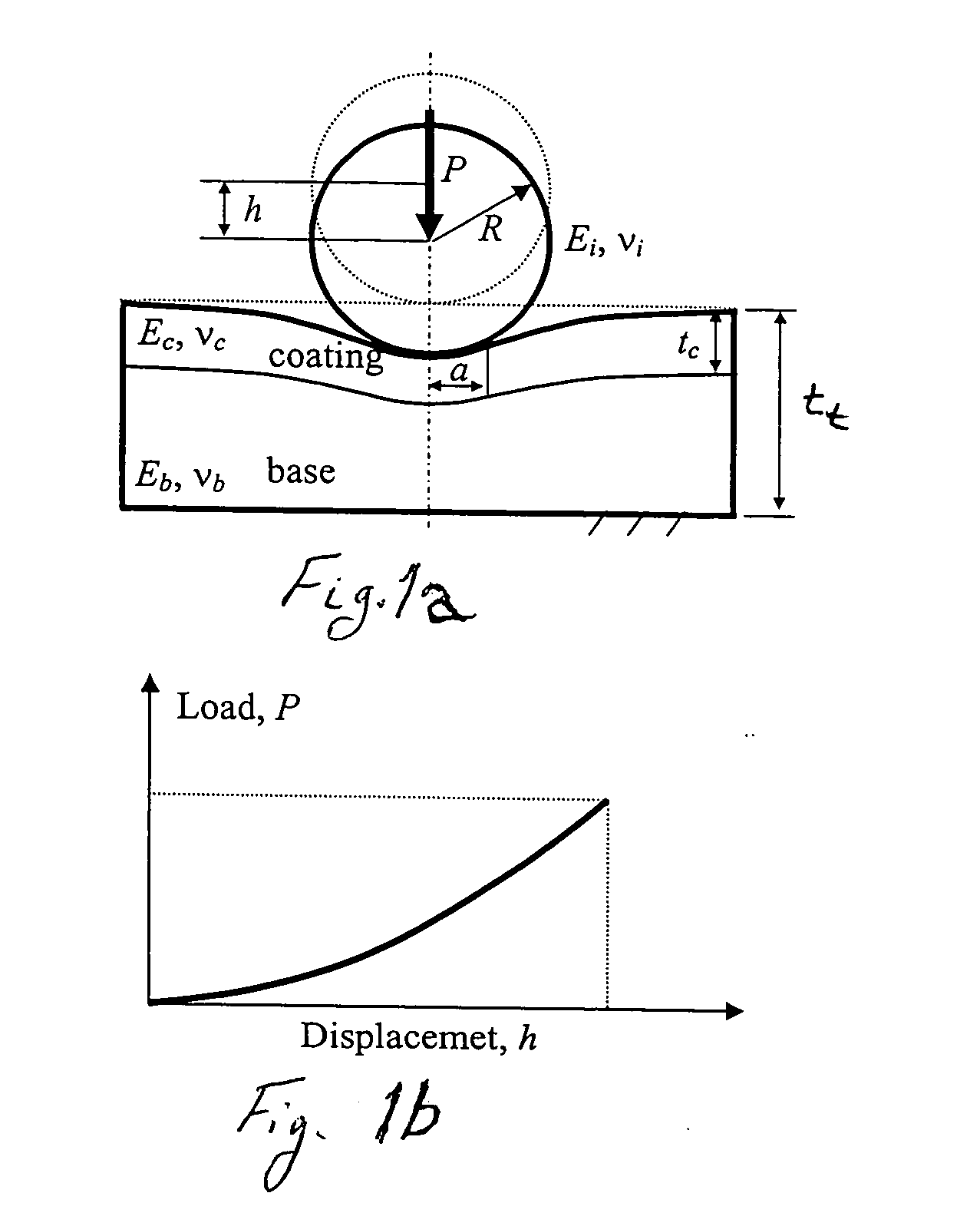Determination of young's modulus and poisson's ratio of coatings from indentation data
a technology of indentation data and young's modulus, applied in the direction of liquid/fluent solid measurement, material strength using tensile/compressive force, instruments, etc., can solve the problems of inability to meet empirical requirements for modulus measurement, inability to accurately determine young's modulus, and inability to meet empirical requirements. to achieve the effect of accurate, convenient and non-destructive determination of young's modulus
- Summary
- Abstract
- Description
- Claims
- Application Information
AI Technical Summary
Benefits of technology
Problems solved by technology
Method used
Image
Examples
experimental examples
[0057] Two samples were prepared to demonstrate practice of embodiments of the invention. Commercial silicon wafers were the substrates on which TiN was deposited with two different thickness. A ball with a radius of 20 mm (FIG. 7c) was used to wear away the coatings and part of the substrate. Wear scars shown in FIGS. 7(a) and (b) were used to determine the coating thickness. Sample A1 and A2 have 2.08 and 3.15 micron thick coatings, respectively. Both samples have very smooth surfaces (Rq is around 10 nm) except some scattering particles (see FIG. 7 around the wear scars). Load and displacement curves were obtained by using a commercial nano-indentation system and a sapphire sphere with the following parameters: Young's modulus of 441 GPa, Poisson's ratio of 0.234, and radius of 122 microns (E*i=466.55 GPa). Nine tests are carried out and average indentation data were shown in FIG. 8 with error bar standing for the standard deviation. For the silicon wafers, Poisson's ratio is ass...
PUM
 Login to View More
Login to View More Abstract
Description
Claims
Application Information
 Login to View More
Login to View More - R&D
- Intellectual Property
- Life Sciences
- Materials
- Tech Scout
- Unparalleled Data Quality
- Higher Quality Content
- 60% Fewer Hallucinations
Browse by: Latest US Patents, China's latest patents, Technical Efficacy Thesaurus, Application Domain, Technology Topic, Popular Technical Reports.
© 2025 PatSnap. All rights reserved.Legal|Privacy policy|Modern Slavery Act Transparency Statement|Sitemap|About US| Contact US: help@patsnap.com



